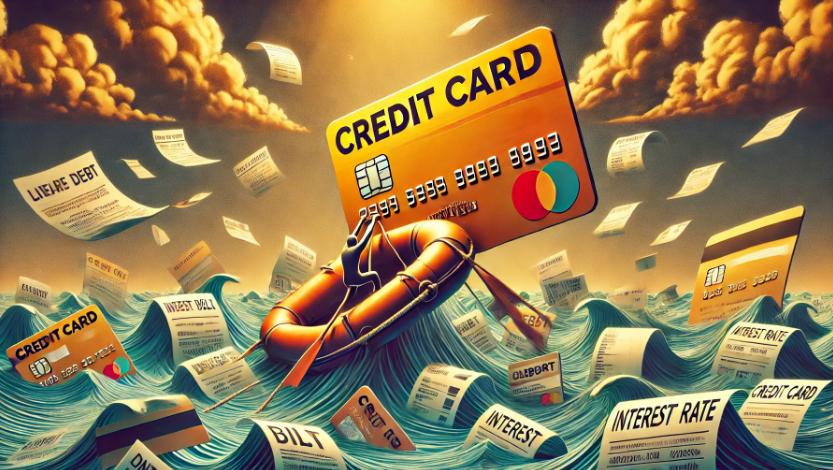Balance transfer credit cards have gained considerable popularity in the U.S. financial market, especially among those looking to manage their debts more effectively. These cards allow users to move high-interest debt from one or multiple credit cards to a new card with a lower or zero interest rate for a limited period.
While they may seem like a lifeline for those trapped by high-interest rates, balance transfer credit cards come with their own set of pros and cons. In this article, we will explore the key benefits of using balance transfer credit cards and weigh them against their potential pitfalls.
By the end, you’ll have a clearer idea of whether this type of card can help you manage your debt or if the disadvantages outweigh the perks. We’ll cover how balance transfer cards can reduce your interest payments, consolidate debt, and give you time to pay down balances, but also look at fees, credit score implications, and the temptation to accumulate more debt.
Advantages of balance transfer credit cards

One of the biggest appeals of balance transfer credit cards is the ability to save on interest payments. Many balance transfer cards offer an introductory period—typically 6 to 18 months—during which no interest is charged on the transferred balance.
This feature can be a game-changer for individuals who are carrying high-interest debt on their current credit cards. Instead of seeing their debt grow due to steep interest rates, users have a window of time to pay down the principal amount. This not only reduces overall debt but also accelerates the timeline for becoming debt-free.
Another key advantage of balance transfer credit cards is the ability to consolidate multiple debts into a single payment. Juggling several credit card balances can be overwhelming, both financially and mentally. With a balance transfer card, users can transfer all their existing debts onto one card, simplifying the payment process and making it easier to track progress.
This can also lead to better financial management, as users are less likely to miss payments when they only have to focus on one monthly due date. Additionally, balance transfer credit cards can offer consumers more breathing room in their monthly budget. Without the weight of interest accumulating each month, cardholders can allocate more of their money toward other expenses or financial goals.
This temporary relief from interest payments can also provide an opportunity to establish healthier financial habits, such as saving or investing, while aggressively paying down debt. However, these advantages must be approached with caution, as they are often time-limited and come with conditions.
Potential pitfalls: fees and credit score impacts
Despite the significant benefits, balance transfer credit cards also come with drawbacks that need to be carefully considered. One of the most prominent disadvantages is the balance transfer fee. Most credit card companies charge a fee to transfer your balance—usually around 3% to 5% of the amount transferred.
This fee can add up quickly, especially if you’re transferring a large balance. For example, transferring $10,000 could cost anywhere from $300 to $500, which may negate some of the savings from the reduced interest rate. In some cases, the fee can make the balance transfer less appealing than initially expected.
Another important consideration is the potential impact on your credit score. When you apply for a new balance transfer card, a hard inquiry is typically performed on your credit report, which can temporarily lower your credit score.
Additionally, opening a new line of credit affects your credit utilization ratio—the amount of credit you are using compared to the amount available to you. While transferring your balance might reduce your overall debt, it could increase your credit utilization on the new card if the transferred amount is high.
There is also the temptation to continue accumulating debt after transferring your balance. With an interest-free period, some cardholders may feel encouraged to make new purchases, thinking they have more time to pay everything off.
This mindset can quickly lead to further debt accumulation, especially if the new purchases aren’t paid off before the introductory period ends. Once the promotional period is over, the card’s interest rate usually jumps significantly, often to a rate higher than the average for regular credit cards, putting the cardholder back in the same debt cycle they were trying to escape.
Long-term considerations and strategic use of balance transfer cards
In addition to immediate fees and credit score considerations, the long-term implications of using a balance transfer credit card should also be weighed carefully. The introductory zero-interest period is a temporary fix; once it ends, any remaining balance will start to accrue interest at the card’s regular rate, which can be as high as 20% or more.
If you haven’t managed to pay off your transferred balance within this timeframe, you could find yourself in a worse financial position than before. To make the most of a balance transfer card, it’s essential to have a plan to pay off the balance in full before the introductory period ends.
Strategic use of balance transfer credit cards involves more than just transferring a balance and making minimum payments. You should create a budget that allocates a significant portion of your monthly income toward paying down the debt.
This might involve cutting back on non-essential spending or finding additional sources of income. The goal is to eliminate the debt during the promotional period, ensuring that you don’t end up paying high interest rates once the period is over. Financial discipline is key to making the most of this debt management tool.
Another long-term consideration is the impact of having multiple balance transfer cards or repeatedly transferring balances. Some consumers may become dependent on balance transfer offers, hopping from one card to another without ever fully paying off their debt.
This cycle can be damaging to your financial health in the long run, as it leads to a constant reliance on credit and can ultimately prevent you from achieving true financial freedom. The repeated hard inquiries on your credit report, along with the possibility of mounting debt, can make it difficult to secure loans or credit in the future.





